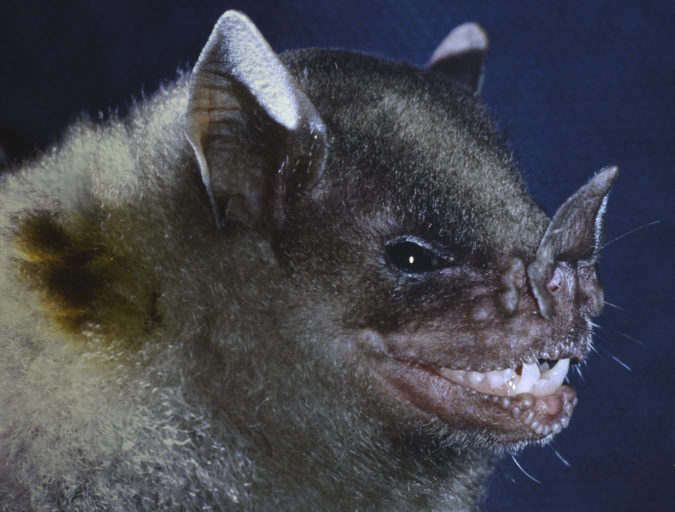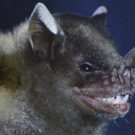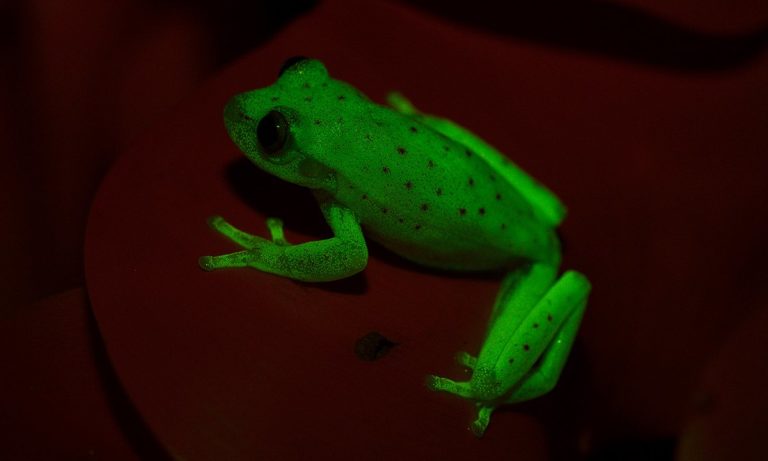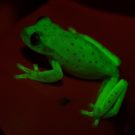Orchids (members of the family Orchidaceae) are diverse flowering plants with colorful and fragrant blooms and are often described as neglected plants in Nepal, where an estimated 500 or so…
Early in her career, Megan Owen recalls, she often found herself wishing for more data to understand certain behavioral patterns in the animals she was studying. However, more often than…
Ocean Revolution Mozambique (ORM) was one of the winners of the United Nations Development Programme’s (UNDP) Equator Prize for 2022, awarded to recognize community-led efforts in conservation and sustainability that…
COP15, MONTREAL, Canada — After marathon negotiations and a clutch of protests (including a “die-in” by global youth, and a walk-out by developing countries over a funding stalemate) nearly 200…
Scientists have puzzled over the distinctive form of giraffes at least since Charles Darwin and Jean-Baptiste Lamarck (figuratively) butted heads over how the towering ungulates got their long necks. The…
Human transgressions of the biodiversity, land-use, pollution and climate planetary boundaries are altering gut microbiomes across species, impacting human health and ecosystems. But there’s hope.
Update 2/2022: In late January, correspondence found among the late E.O. Wilson’s papers connected him with J. Phillipe Rushton, whose research in the 1980s and 1990s has been linked with white…
Edward O. Wilson, a prominent biologist and prolific author who help raise global awareness and understanding about biodiversity and conservation, has died. E.O. Wilson, as he was often known, died…
In the prairies of the Lower Brulé Indian Reservation, the typically knee-high grass extends to the horizon. But in areas home to burrowing mammals, like prairie dogs (Cynomys ludovicianus), the…
In Brazil's different biomes, each environment offers a distinct experience. An unspoiled natural landscape is not only a precious reservoir of biodiversity, it can also be a feast for the…
Polar phytoplankton, fish, seabirds and mammals are increasingly threatened by global warming, which is destabilizing Arctic ecosystems, even as southern species move northward — will the imbalanced biome collapse?
In 2016, conservation biologist Holly O’Donnell was striding through the Amazon rainforest in southwestern Peru, recording every mammal she saw or heard while performing a line transect survey for the…
Over 25 years ago, world-renowned scientist Edward O. Wilson (often referred to as E.O. Wilson), published his celebrated homage to his personal journey as a scientist, biologist, and human being,…
Like the rainforest which takes its name, the Amazon is the largest and most biodiverse river on the planet: the Amazon carries more than five times the volume of world's…
MANILA — It took a closer look at the male jumping spiders’ reproductive organ – the shape of it, to be precise — for two Filipino scientists to declare three…
Did you ever think about the information we can gain from a simple sample of feces? Wildlife researchers have, and the information they obtain from poop samples can tell them…
It all started in 2008 when scientists started noticing fire salamanders in the Netherlands were disappearing. By 2011, nearly all salamanders in affected Dutch populations had been killed off, as…
In a counterintuitive surprise, a new study finds that fish species evolve more than twice as rapidly at the poles than in the tropics. The reason why isn’t currently known.
Scientists started to get worried in the 1970s when frogs in Australia and Central and South America began disappearing. The culprit seemed to be a chytrid fungus that colonized frogs’…
On January 23, a new national park joined Ecuador’s 54 protected areas. Río Negro-Sopladora National Park lies in southern Ecuador’s Morona Santiago and Azuay provinces within the Cordillera Real Oriental…
For a few minutes on Monday, August 21, the moon will blot out the sun completely, causing a total solar eclipse. The skies along a narrow 70-mile-wide band across the…
Habitat loss, over-hunting and climate change are just a few of the human-induced changes to the Earth that biologists say are driving the planet’s “sixth mass extinction.” Research has shown…
Scientists have uncovered a new species of bat in the mountains of Venezuela and Colombia. But its forest habitat is under big threat from slash-and-burn agriculture, and its discoverers are…
Scientists have discovered the first-ever fluorescent frog. Under normal light, the South American polka dot tree frog (Hypsiboas punctatus) -- widespread in South America -- appears a dull brownish-green with…
Hugging the shores of a lake in a far-eastern part of the Democratic Republic of the Congo (DRC) is a strip of mountainous rainforest that has never been thoroughly surveyed…
The saki, or "flying monkey," a mid-sized South American primate, gets its nickname from its ability to quietly skim through the tops of trees. These rainforest inhabitants use their sharp…
An ongoing expedition in Bolivia's Madidi National Park has recorded its 1,000th bird species, highlighting the park as a hotspot of avian biodiversity. The park is thought to contain more…
"The evolution of science [occurs] by means of questions that are made — not by the answers." So said Pedro Vasconcelos in an interview with Mongabay. He is director of…
In the southern Red Sea, scientists have discovered what could be a new species of luminous polyps that light up the mud snails they piggyback on. These polyps or sea…
We may cringe at the thought of diving our heads into a rotting carcass. But vultures relish such putrid meals. In fact, by removing carcasses, vultures prevent diseases from spreading…


































































